THE FIRST GLOBAL INTERACTIVE
FORUM ON TRAFFIC & SAFETYEvent
Thank you so much for your participation in the Symposium on 28th November, 2015.
The report of symposium can be seen on this website in a few days.
Outline
| Title: | THE FIRST GLOBAL INTERACTIVE FORUM ON TRAFFIC & SAFETY |
| Venue: | U Thant International Conference Hall , United Nations University, 5-53-70 Jingumae Shibuya-ku, Tokyo 150-8925, Japan |
| Date: | Saturday, November 28, 2015 |
| Host: | International Association of Traffic and Safety Sciences (IATSS) |
Opening Address
Kazuhiko Takeuchi
IATSS President / Director and Professor, Integrated Research System for Sustainability Science (IR3S), The University of Tokyo Institutes for Advanced Study (UTIAS), The University of Tokyo
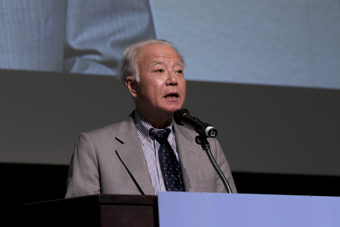
Professor Takeuchi greeted everyone a good afternoon, extended his heartfelt appreciation to all participants, emphasized the dramatic changes in technology and traffic safety, as well as the impact of CO2 emissions and obstacles such as social disparities. He stressed that there was a need for practical initiatives and that the IATSS was pursing goals with a "transdisciplinary" approach in efforts to develop sustainable relations with organizations in various countries. Professor Takeuchi provided a brief summary on the closed workshops held over the last two days, thanked everyone for their attention, and concluded his opening remarks.
Objective Description
Akinori Morimoto
IATSS Member and Chairman, International Forum Committee / Professor, Faculty of Science and Engineering, Waseda University
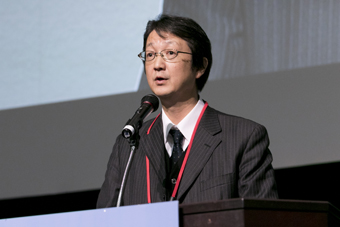
Professor Morimoto provided the agenda for the symposium, stating that there were common issues among various countries in relation to mobility, expressed his hope that everyone would be interactive during the discussions, and thanked everyone for their attention.
Keynote Address
"The Future of Road Safety: A Worldwide Perspective"
Fred Wegman
Professor Emeritus, Delft University of Technology (The Netherlands)
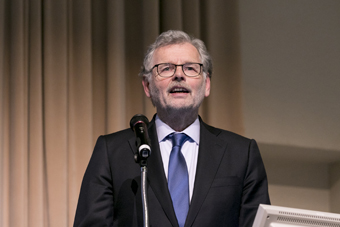 |
 |
Prof. Wegman discussed the analysis process of road safety data, identifying topics such as novice users and elderly drivers, and noted that there was risk particularly among younger and older drivers. He presented effective interventions in traditional areas, including those in human behavior, legislation and enforcement campaigns, infrastructure, vehicles, post-crash responses, and new developments.
Prof. Wegman indicated that several high motorized/income countries were very successful to reduce the number of road fatalities in the last few decades applying effective interventions. However, he referred to a recent OECD/ITF-report on the relationship between economic development and road safety. This report concluded that when economic growth declines, road safety improves, suggesting that economic downturns have contributed to about two-thirds of observed road fatality reductions. However, road traffic injuries worldwide are still a major problem, and 1.25 million people are killed worldwide per year in road crashes. He noted that up to 50 million people suffer non-fatal injuries, and that the prevention of injuries deserves to be included in safety strategies.
Prof. Wegman commented on the Decade of Action for Road Safety, on their goal of halving the number of fatalities worldwide in 5-10 years' time, which would save around 5 million lives. He then discussed the Sustainable Development Goals, stressing that road safety was not a standalone priority but that it was included in the health and city targets, which he considered a good signal as a first step. He emphasized improving the quality of the measures being implemented, identified differences in addressing road safety in high income and low income countries, and provided examples of results after implementing 50 years of road safety policies in high income countries.
Prof. Wegman stated that road traffic today is still inherently dangerous, noting our fundamental road safety problems, such as that the road system of today has not been designed with safety in mind. This means that we are almost fully dependent on how good a road user is in preventing a crash. The road system should be designed to expect and accommodate human error, and this concept has been accepted and implemented in other sectors of transportation.
He then discussed the design of a Safe System, such as taking the interaction between the road user, vehicle, and road into account. He then provided suggestions, such as having a more integral or holistic approach, and discussed the fact that organizations were working in silos, such as legislators, road authorities, car manufacturers, and police enforcement. He also commented on developments in technology, such as interlocks for drinking and driving or use of seat belts, and vehicle control support.
Prof. Wegman then highlighted the next steps, such as that high income countries would move in the direction of a Safe System approach, that the Safe System deals with human behavior by creating an environment to make traffic considerably safer. He expects that new technologies will contribute more to improve road safety, and a strong leadership and an active public sector is needed to reach positive safety effects of these new technologies. For low and middle income countries, he emphasized the importance of real political interest (national and local), road safety strategies and action plans, a strong road safety community, the commitment of key stakeholders, road safety research capacity, advocacy work such as by NGOs, and an active and effective international community.
"The Impact of Road Improvement on Road Safety and Related Characteristics"
Francis John Gichaga
Professor of Civil Engineering, University of Nairobi (Kenya)
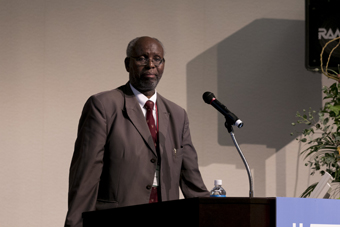 |
 |
Prof. Gichaga commented on the effect of cultural values on road accident causation, and provided a background on the improvements being made on the Nairobi-Thika Highway in Kenya, identifying issues such as human behavior. He also discussed the situation in the Northern Corridor which has been going through major rehabilitation. The monitoring and evaluation of the Northern Corridor Road Improvement Project for the Road Safety Component involved the collection and analysis of accident data, and making recommendations in appropriate areas.
Prof. Gichaga then presented slides with information on accident data in the Northern Corridor, and provided recommendations such as improving road geometric design, road safety barriers, bus-laybys. For driver behavior, driver training should be considered, and there should be compulsory rest for long distance truck drivers. On vehicle maintenance, he recommended regular checks and maintenance to be implemented, as well as for strict servicing programs. He also added that pedestrian crossings need to be added, to have training programs specifically for motorcyclists, to train pedestrians on basic road safety, and for the government to insist on users complying with road safety rules, as well as for their enforcement.
Opening Address
Yoshitsugu Hayashi
IATSS Councillor / Prof.Dr.-Eng. & Director, Education and Research Center for Sustainable Development, Graduate School of Environmental Studies, Nagoya University / President, WCTRS / Full Member, Club of Rome
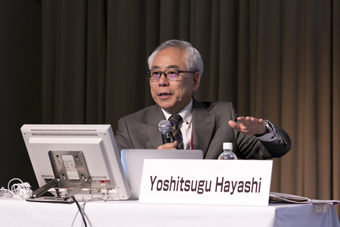
Prof. Hayashi provided opening remarks for the panel discussion, noting the themes of the "Future of Road Safety," and the "Impact of Road Improvements on Road Safety." He then provided a brief agenda for the panel discussion, noting key issues such as the overall well-being of society, sustainable transport and space use, and infrastructure.
Leading Presentation
"The Evolution of Urban Transport Policies: Changing 'Transport Cultures'"
Peter Malcolm Jones
IATSS Overseas Fellow / Professor of Transport and Sustainable Development, and Director of the Centre for Transport Studies, University College London (UK)
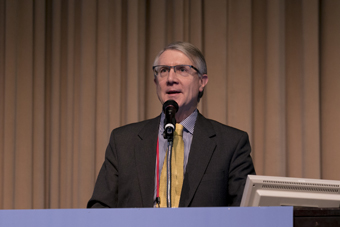 |
 |
Prof. Jones stated that we could observe a historical evolution of transport policy in many cities and that this evolution was associated with changing policy priorities and a culture change in the role of transport in cities. To describe the urban transport policy development cycle, he stated that in most cases, cities started out with rapid growth in vehicle ownership, over time citizens shift to a more "personal movement" focus which resulted in improvements particularly to public transport, and at the end of a city’s development cycle, it would develop a focus on activity and quality of life, having an emphasis on areas such as efficient and sustainable modes of transport, resulting in an overall decline in automotive use. Prof. Jones then presented data that showed this type of growth was seen in areas such as London, Paris, and Vienna.
Prof. Jones then commented on examples of motorway removals such as in Portland and Seoul, and an overview of London's classification of 9 different street types, which were a result of these cities moving through this three part cycle. He then questioned why some cities remained in stage one, such as Houston. He emphasized that attitudes and culture change over time, which would affect the allocation of funds to roads and parking versus sustainable moves, suitable financing and governance structures, as well as people identifying with role models.
Prof. Jones stressed that change was possible, particularly when people were confronted with negative impacts, that transitions were expensive, and that some cities could be locked into car-based patterns such as when densities too low for public transport, walking or cycling, or if land use was too dispersed. He finally proposed the open question of if there was a stage four.
Short Presentations and Comments
"Public Transportation Development and Traffic Accident Prevention in Indonesia"
Sutanto Soehodho
IATSS Overseas Invited Member / Deputy Governor of Jakarta for Trade, Industry, and Transportation, Jakarta Local Government / Professor of Transportation, University of Indonesia (Indonesia)
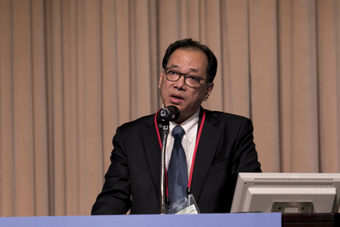 |
 |
Prof. Soehodho stressed the high number of traffic accidents in Indonesia, highlighting the number of fatalities, severe injuries, light injuries, and material loss. He then discussed Indonesia's traffic accident trends, emphasizing the explosive growth of motorbike use, poor public transportation services, the slow expansion of land transportation infrastructure, and the effect of price and funding in these areas.
Prof. Soehodho then provided approaches to prevent traffic accidents, including the development of public transportation systems, the development of land transportation infrastructure, and the management of traffic and transportation demand. He then noted various transportation projects in Jakarta, such as Transjakarta (bus rapid transit) and Lebak Bulus (mass rapid transit corridor).
"Patterns of Motorization Development and the Next-Generation Urban Mobility Systems"
Katsutoshi Ohta
IATSS Director / Professor Emeritus, The University of Tokyo
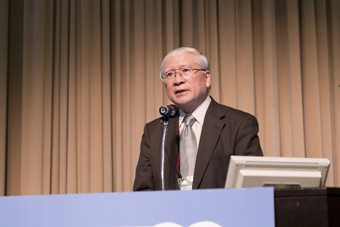 |
 |
Prof. Ohta discussed the effect of aging populations and changes in policies on transport safety. He expressed the need to find the triggers to implement policy changes, and mobilizing all stakeholders to act together. Prof. Ohta then identified differences in transport cultures, and described the responsibilities of the Government of Japan in regards to public transportation. He also touched upon the development of new technologies such as Uber, emphasized that preventing mobility gaps would be important.
"If Car-use has peaked in Many Cities, is Public Sentiment all Downhill from here?"
Martin E.H. Lee-Gosselin
IATSS Overseas Fellow / Professor Emeritus, Graduate School of Planning (ESAD & CRAD), Universite Laval, Quebec City (Canada) / Visiting Professor, Centre for Transport Studies, Imperial College London (UK)
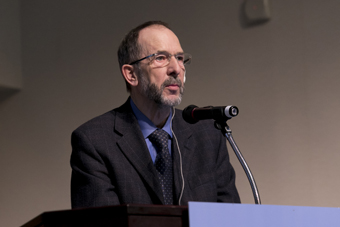 |
 |
Prof. Lee-Gosselin discussed the underlying themes of the evolution of mobility in cities and public sentiment about cars, stating that public sentiments are an influential dimension of diverse, regionally-rooted transport cultures. But he cautioned that, contrary to popular beliefs, a successful effort to change a targeted attitude does not automatically bring about a corresponding change in behavior.
Prof. Lee-Gosselin noted that information and communications technologies were rapidly becoming pervasive to the point that we should think in terms of ICT-Transport Cultures and the role public attitudes play in them.
Prof. Lee-Gosselin then brought up his third point that ICT-Transport Cultures were vulnerable to radical shifts in public sentiment if travel became much less affordable or accessible, emphasizing that there was a serious possibility that travel would become much more difficult and expensive in the coming decade.
•Dr. Fumihiko Nakamura(IATSS Member / Executive Director and Vice President, Yokohama National University) briefly commented on Prof. Soehodho's presentation, discussing what kind of modal shift would be expected and how it would be realized, how we can describe the role of motorcycles and paratransit, as well as how to educate or discipline younger drivers.
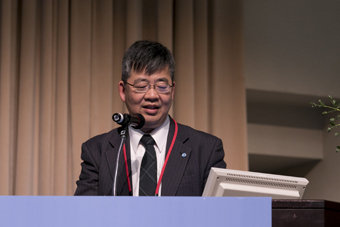
•Prof. Kenji Doi(IATSS Member / Professor, Department of Global Architecture, Graduate School of Engineering, Osaka University) commented on the presentation by Prof. Ohta, questioning if countries were really moving toward the same goals. He then highlighted goals of future mobility.
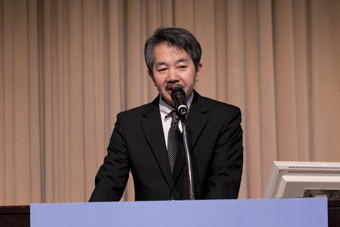
•Prof. Mariko Futamura,(IATSS Member / Professor, Department of Economics, Tokyo Women's Christian University) commented on the presentation by Prof. Lee-Gosselin, raising questions on what is a Joint ICT-Transport Culture? What kind of things can we learn from South countries? And how could we implement ICT in a car-centered society?
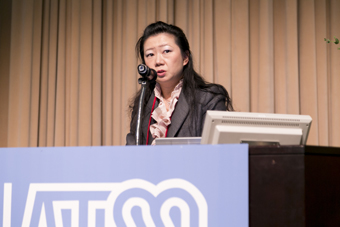
Discussion
| Moderator: | Yoshitsugu Hayashi |
| Panelists: | Fred Wegman, Francis John Gichaga, Peter Malcolm Jones, Martin E.H. Lee-Gosselin, Katsutoshi Ohta, Sutanto Soehodho, Kenji Doi, Mariko Futamura, Fumihiko Nakamura |
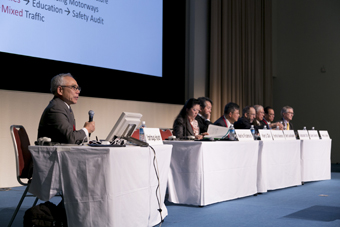 |
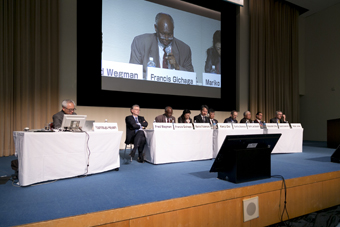 |
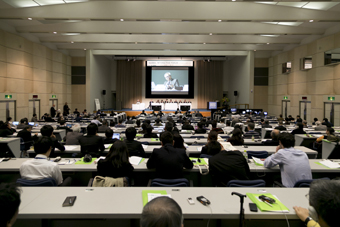 |
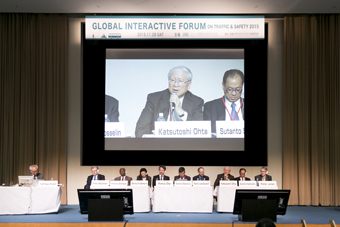 |
Prof. Hayashi briefly summarized the themes of the presentations. Prof. Soehodho stated that the government seemed to be expediting the way toward public transport, noting that all the infrastructure would be implemented by the government and other areas would be financed by the private sector. Dr. Hayashi mentioned one of JICA's development projects in Bangkok, noting the change in investment priorities between roads and rail. Prof. Jones said that the presentations were helpful in highlighting various issues, including cultural shifts, the role of the private sector, and the issue of land use.
Prof. Hayashi then raised the point that Kenya would most likely see economic growth in the near future, and may be interested in looking into the case examples in Bangkok and Jakarta. Prof. Gichaga commented on cultural values and its effect on vehicle ownership, the current implementation of public minibuses in Kenya that were privately owned, and the risk of using motorcycles. He also expressed his hope for further developments in ICT but feared that it may take some time before they could be fully utilized. Prof. Hayashi raised the issue of who would be driving the minibuses, and the implementation of education. Dr. Nakamura emphasized the importance of having a plan and keeping an eye on trends to keep traffic safety a priority. Prof. Doi emphasized that when building infrastructure, utilizing a vision-based approach would be most practical.
Prof. Hayashi questioned how health could be promoted among populations. Prof. Ohta commented that the latest technologies should be used, but that there were various factors such as policy, vision, cost, funding, or sentiment. He added that each country should come up with their own solutions to fit with their existing cultures. Prof. Lee-Gosselin clarified the idea of subcultures, and the possibility of using ICT to monitor CO2 emissions on a personal basis. Prof. Futamura noted how ICT was deeply involved in transport behavior.
Prof. Hayashi then raised the issue of road safety and the implementation of a safe system. Prof. Wegman stated that because we are not satisfied with the current level of safety in society it is important to include safety more explicitly and transparently in the decision making process. He added that he would like to see certain safety standards that have to be met when decisions are being made.
Prof. Hayashi invited comments from the floor audience. Dr. Nicola Christie (Director of Transport Institute, University College London) expressed interest in equity, noting there was evidence to suggest that certain values pushed lower income level citizens out of the centers of cities, and that these types of issues should be considered when implementing policies. Dr Marianne J.W.A. Vanderschuren (Centre for Transport Studies, Department of Civil Engineering, University of Cape Town) wondered if BRT was the right choice for the Corridor in Kenya. Dr. Pongrid Klungboonkrong (Deputy Director for Administrative Affairs, Sustainable Infrastructure Research and Development Center (SIRDC), Faculty of Engineering, Khon Kaen University; ATRANS board member and Chair of research committee) suggested drawing parallels between urbanization and road safety, noting that he would like to see a change in land use, implementing public transport and developments of new technology.
Prof. Hayashi commented that awareness was vital, and that resilience and sustainability were critical to flexibly recover from external forces or impacts, such as sudden socioeconomic changes, major disasters, or unforeseen accidents while moving progress forward, and the discussion was closed.
Closing Address
Sho Minekawa
IATSS Vice President / Senior Managing Officer, Honda Motor Co., Ltd.
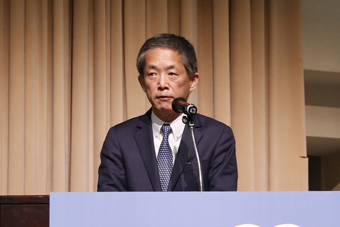
Mr. Minekawa expressed his thanks for everyone who attended the forum, stated their mission, such as to alleviate traffic congestion, to deepen cooperation with transportation experts around the world, and concluded the Global Interactive Forum on Traffic & Safety Symposium.

